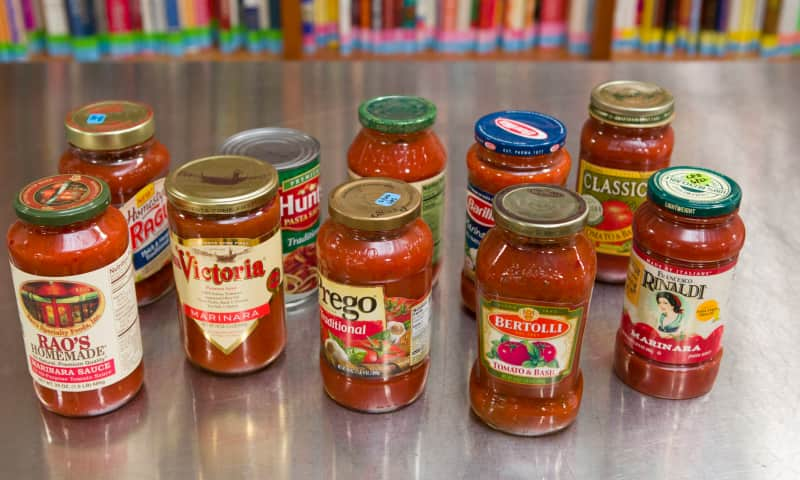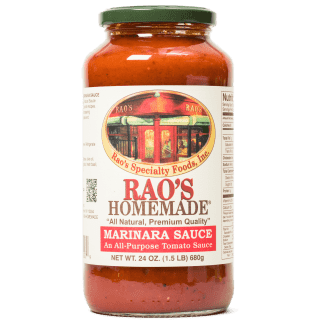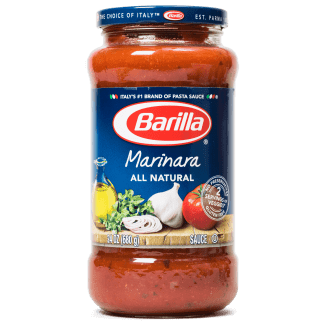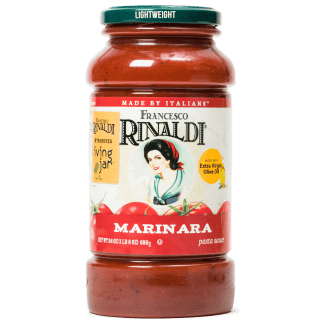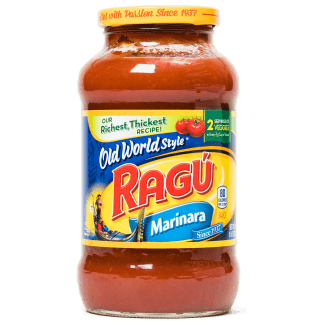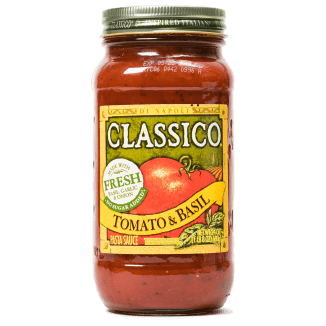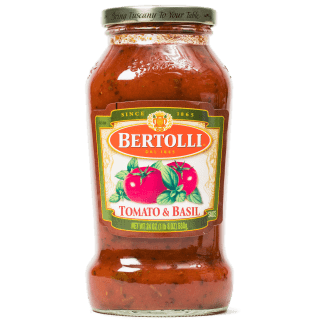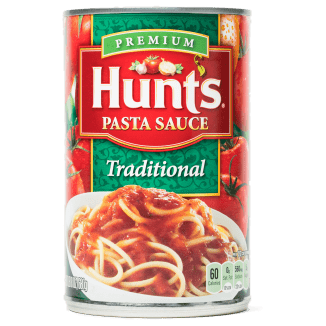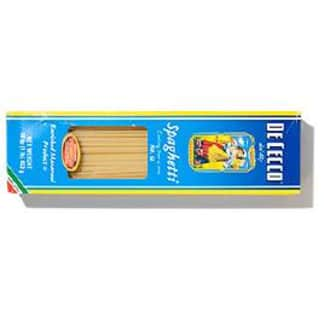Tomato sauce is a staple of Italian American cooking, and though we usually prefer to make our own from canned or fresh tomatoes, some nights call for a quick dinner of pasta and jarred sauce. Though tomato sauce can be fairly simple—consisting of tomatoes, oil, and spices—choosing a jar from the supermarket is not. Brands such as Ragú and Classico offer more than a dozen sauces apiece. How the heck does a home cook figure out what to buy?

We narrowed the options by eliminating anything with cheese, meat, vegetables, cream, or wine, focusing on simple sauces from the 10 best-selling national brands. We heated the sauces until simmering and sampled them plain and tossed with spaghetti.
Simple as tomato sauce can be, we found striking differences in the products. Half the sauces were “borderline inedible.” They were cloying like “bad barbecue sauce,” were inundated with “pine-flavored” herbs reminiscent of “air freshener,” or had a “mealy,” “wet” texture like “baby food.” In the end, we could fully recommend only two sauces. What set these products apart?
Tasters Demand No Added Sugar and Whole Tomatoes
We zeroed in on the first culprit: sugar. Most of the sauces in our lineup contained added sugar or corn syrup, for a total of 5 to 11 grams of sugar (including those naturally occurring in the fruit) per ½ cup of sauce. These saccharine sauces were sickly sweet, more reminiscent of ketchup than tomato sauce. By contrast, our favorite products had no added sugars and only 3 or 4 grams of sugar per ½ cup. We thought these sauces had balanced tang, subtle sweetness, and rich tomato flavor.

But ideal tomato flavor wasn’t just a result of less sugar. Tasters found that sauces seemed to fall into two categories: Some had a very “reheated” flavor that came off as dull, while others tasted fresher and more vibrant. A look at ingredient labels revealed that the lackluster sauces were made primarily from reconstituted tomato paste with some diced tomatoes thrown in for texture. On the other hand, the manufacturers of our favorite sauces confirmed that they started with whole tomatoes. Experts from the tomato product industry explained that the majority of tomatoes grown domestically are processed into paste because paste has a long shelf life and can be reconstituted into an array of products, including juice, sauce, ketchup, and soup. However, the additional heat and processing required strip the fruit of its volatile aromas, which can result in a dull, cooked flavor. Though tomato paste has a place as a supporting character in chilis and stews, we preferred sauces made from whole tomatoes, which provide bold, fresh flavor.

How Herbs and Olive Oil Impact Sauces
Adding to the “old” flavor of lower-ranked products were “dusty” notes of dried herbs. Most of the sauces contained some oregano and basil, but we found the amount used in many products overpowering. We preferred only subtle hints of herbs, garlic, and onion.
Our favorite products also had fat in the form of olive oil—and lots of it. Top-ranked sauces had three or four times as much fat—up to 7 grams per ½ cup—as lower-rated products. Those lacking in fat seemed dry, parched, and dull on pasta, whereas sauces with a hefty dose of olive oil clung well to spaghetti and tasted buttery and rich.

How Did Jarred Sauces Fare in Lasagna?
As part of our testing, we strained the sauces to measure what percentage of each was liquid. They varied significantly, from 18 percent liquid for our top-ranked sauce to 43 percent for our bottom-ranked product. Though most of the sauces performed well on spaghetti, we were curious if the amount of liquid would affect texture when the sauce was used in a baked application. To see, we prepared lasagna with the top two and bottom two sauces.
Our lowest-ranked sauce, which was 43 percent liquid, made lasagna that was a wet, mushy mess. Sauces that were 35 percent liquid, such as our second-place product, fared better and made lasagna that sliced cleanly once fully cooled. But our favorite sauce, which was just 18 percent liquid, made the best lasagna of all, with the neatest, most distinct layers.
Our Favorite Pasta Sauce: A Delicious Investment
While we came away with two favorites, neither is cheap. But we believe that spending the extra money is worth it for a superior product, and the prices of these high-end sauces are on par with the cost of the ingredients needed to make our homemade marinara sauce. Though we still prefer to make sauce when we have time, our winner, Rao’s Homemade Marinara Sauce, is a rich, bright sauce that’s a good stand-in for homemade.
- Sample plain
- Taste tossed in spaghetti
- Taste the top two and bottom two sauces in our Cheese and Tomato Lasagna
- No added sugar
- Made using whole tomatoes instead of tomato paste and water
- More than 4 grams of fat per ½-cup serving
- Low percentage of liquid when drained, which prevents a soggy, wet lasagna
